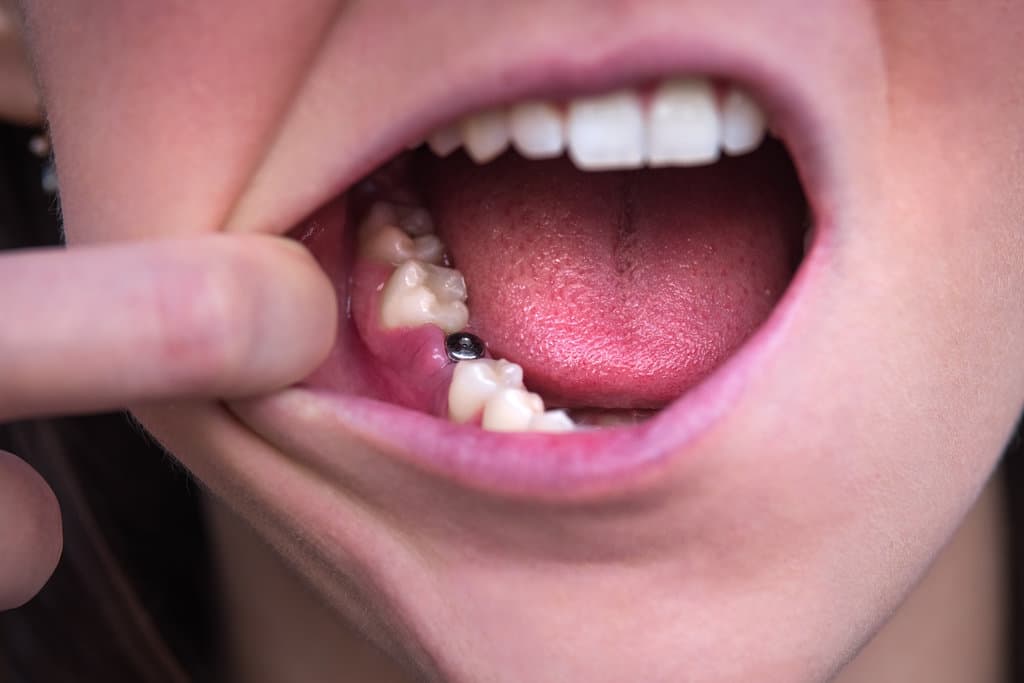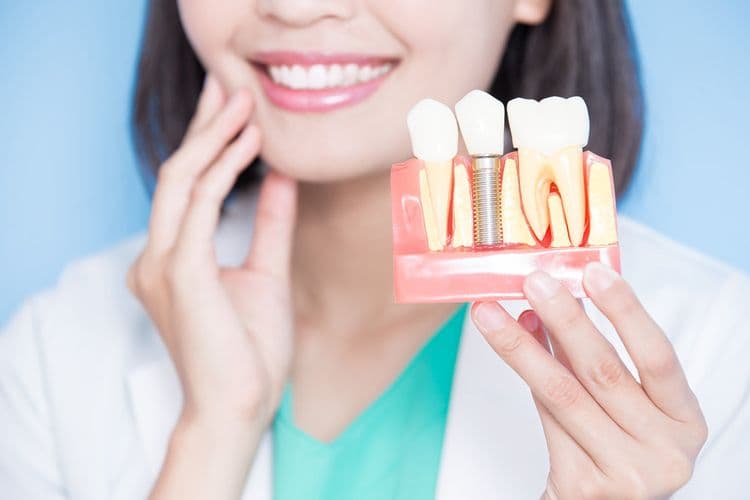Dental implant healing involves a series of well-defined stages, each essential to the implant’s success. Starting with the inflammatory phase, where hemostasis and leukocyte recruitment occur, the process moves into soft tissue remodeling, driven by fibroblasts and collagen, around two weeks post-surgery. The pivotal osseointegration phase, lasting 3 to 6 months, guarantees the bone securely integrates with the implant. Each stage is essential, yet what intricacies define successful osseointegration?
Pre-Operative Preparation
Pre-operative preparation is an essential phase that guarantees the success of dental implant procedures. This stage involves an extensive pre-surgery consultation, where the dental specialist evaluates the patient’s medical history to identify any contraindications or potential complications. The medical history assessment is significant, as it provides insights into systemic conditions such as diabetes, osteoporosis, or cardiovascular diseases that may affect osseointegration. During the pre-surgery consultation, diagnostic imaging like panoramic radiographs or CT scans is employed to assess bone quality and quantity, ensuring ideal implant positioning. Additionally, the evaluation of the patient’s oral hygiene practices is important to minimize infection risks. Evidence-based protocols recommend thorough communication between the clinician and patient to establish realistic expectations and foster adherence to pre-operative guidelines.
Initial Surgical Procedure
The initial surgical procedure in dental implantology is a critical stage where the implant is strategically placed into the jawbone. This complex procedure involves precise surgical techniques to guarantee ideal osseointegration. The practitioner begins by making a small incision in the gingival tissue to expose the underlying bone. Using a specialized drill, a pilot hole is created, followed by sequentially larger drills to accommodate the implant’s dimensions. Anesthesia options, such as local anesthesia, intravenous sedation, or general anesthesia, are selected based on patient needs and procedural complexity. Accurate placement of the implant is verified through radiographic imaging, guaranteeing proper angulation and depth. This meticulous approach minimizes complications and enhances the likelihood of successful implant integration and long-term stability.
Immediate Post-Operative Care
Immediate post-operative care following dental implant surgery is essential for successful osseointegration and involves managing swelling and discomfort through the application of cold compresses and prescribed analgesics. Evidence-based guidelines emphasize the importance of maintaining proper oral hygiene to prevent infection, recommending the use of antimicrobial mouth rinses and gentle brushing techniques around the surgical site. Adherence to these practices facilitates ideal healing and minimizes the risk of complications.
Managing Swelling and Discomfort
Following dental implant surgery, effectively managing swelling and discomfort is essential for ideal recovery. Swelling typically peaks within 48-72 hours post-operatively, necessitating timely interventions. The application of ice packs intermittently during the first 24-48 hours can considerably attenuate localized edema by inducing vasoconstriction. Ice packs should be applied for 15-minute intervals, ensuring intervals of equal duration for tissue recovery.
Pain management is integral for patient comfort and recovery. Nonsteroidal anti-inflammatory drugs (NSAIDs) are frequently recommended to mitigate pain and inflammation. Prescription analgesics may be utilized for more severe discomfort, adhering to the prescribed dosage and duration to prevent adverse effects. Evidence-based pain management protocols prioritize a combination of pharmacologic and non-pharmacologic strategies to enhance patient outcomes and satisfaction.
Proper Oral Hygiene Practices
While managing swelling and discomfort is essential, maintaining ideal oral hygiene is equally vital in the immediate post-operative phase to prevent infection and support healing. Post-surgical care involves meticulous cleaning practices that guarantee the implant site remains free from bacterial proliferation. Flossing techniques should be adapted to avoid disturbing the surgical area, recommending the use of specialized interdental brushes or water flossers for their gentle yet effective cleaning capabilities. The incorporation of mouthwash benefits the healing process by reducing microbial load and promoting an antiseptic environment. Chlorhexidine mouthwash, for instance, is often prescribed due to its broad-spectrum antimicrobial properties. It is important to follow a dentist’s specific recommendations, balancing rigorous hygiene with protective care to optimize implant integration and longevity.
Early Healing and Soft Tissue Formation
How does the process of early healing and soft tissue formation unfold following a dental implant procedure? Initially, the body initiates a complex biological response to facilitate wound closure and tissue repair. The healing timeline for soft tissue is marked by the inflammatory phase, typically occurring within the first 48 hours, characterized by hemostasis and leukocyte infiltration. Subsequently, the proliferative phase ensues, involving fibroblast proliferation and collagen deposition, vital for granulation tissue development. By approximately two weeks post-surgery, soft tissue remodeling begins, enhancing the structural integrity around the implant site. Clinical studies indicate that ideal soft tissue healing is essential to prevent peri-implantitis and maintain long-term implant success. Monitoring and managing these phases are significant components in post-operative care.
Osseointegration Process
The complex biological cascade initiated during early healing and soft tissue formation sets the stage for the osseointegration process, an integral phase for the success of dental implants. Osseointegration, defined as the direct structural and functional connection between living bone and the surface of a load-bearing implant, is critical for implant stability. Research indicates that the osseointegration timeline varies, typically spanning 3 to 6 months, contingent on individual biological responses and site-specific factors. Initial mechanical stability, provided by precise surgical placement, shifts to biological stability as bone remodeling progresses. This dynamic process involves osteoblast migration, matrix deposition, and mineralization at the bone-implant interface. Achieving ideal implant stability through osseointegration is pivotal for long-term functionality and success of dental prosthetics.

Abutment Placement
Abutment placement marks a critical phase in the dental implant process, bridging the implant fixture and the prosthetic restoration. This stage involves the secure attachment of the abutment to the osseointegrated implant, serving as a foundation for the eventual prosthetic. Abutment types vary, encompassing standard, custom, and angled configurations, each selected based on the clinical presentation and restorative requirements. These components are fabricated from diverse abutment materials, including titanium, zirconia, and gold, chosen for their biocompatibility and mechanical properties. The precision in selecting the appropriate abutment type and material is paramount, influencing the overall success of the implant. Rigorous evidence-based protocols guide this phase, ensuring ideal stability and aesthetic outcomes prior to final prosthetic attachment.
Final Prosthetic Attachment
Completing the dental implant process, final prosthetic attachment is the stage where the definitive prosthetic crown or bridge is secured to the abutment. This phase demands meticulous precision to guarantee ideal fit and function. Dental professionals employ advanced imaging techniques to guide the alignment and angulation of the prosthetic component. Final adjustments are critical, addressing occlusion and contact points to mitigate potential mechanical complications. Aesthetic considerations are paramount, with the prosthetic’s shade, shape, and contour being tailored to harmonize with the patient’s natural dentition. Evidence-based protocols are followed to enhance the long-term success of the implant. The outcome is a restoration that not only meets functional requirements but also enhances the patient’s overall dental aesthetics.
Post-Procedure Monitoring
How vital is post-procedure monitoring in guaranteeing the success of dental implants? Meticulous post-procedure monitoring is fundamental, as it directly influences the healing timeline and implant osseointegration. Clinicians must adhere to post operative instructions, which include evaluating soft tissue healing, appraising implant stability, and identifying early signs of complications such as infection or peri-implantitis. Monitoring involves scheduled follow-ups at significant intervals to track progress and adjust treatment plans if necessary. Evidence-based protocols suggest regular radiographic evaluations to ascertain proper bone integration. Compliance with post operative instructions, such as maintaining oral hygiene and following dietary restrictions, is vital for peak outcomes. Ultimately, rigorous monitoring mitigates risks and enhances the long-term prognosis of dental implants, guaranteeing patient satisfaction and implant longevity.
Long-Term Implant Maintenance
Long-term implant maintenance is critical to ensuring the longevity and functionality of dental implants. Adherence to regular oral hygiene practices, such as brushing and flossing, is essential to prevent peri-implant diseases. Additionally, ongoing monitoring of implant health through professional dental checkups allows for early detection of complications and facilitates timely interventions.
Regular Oral Hygiene Practices
Maintaining ideal oral hygiene is essential for the long-term success of dental implants. Effective flossing techniques, such as using interdental brushes or air flossers, are critical for removing plaque and debris from the peri-implant sulcus, reducing the risk of peri-implantitis. Additionally, incorporating mouthwash benefits into daily routines can enhance oral health by providing antimicrobial effects, thereby inhibiting bacterial colonization around the implant site. Clinical studies affirm that patients who adhere to meticulous oral hygiene protocols exhibit lower incidences of peri-implant complications. A regimen that includes brushing twice daily, utilizing proper flossing techniques, and incorporating therapeutic mouthwashes can greatly contribute to the longevity and stability of dental implants, ensuring that they function effectively without compromise over the years.
Monitoring Implant Health
A critical aspect of dental implant success relies on systematic monitoring of implant health, which guarantees the longevity and functionality of the restoration. Effective monitoring involves evaluating health indicators such as peri-implant tissue condition, bone level stability, and absence of inflammation. Peri-implantitis, characterized by bone loss and inflammation, poses a significant risk to implant longevity. Regular review of these indicators can preemptively identify complications, thereby facilitating timely interventions. Plaque accumulation, a precursor to peri-implant diseases, should be meticulously examined as it directly impacts implant survival. Additionally, radiographic evaluations are essential for detecting subclinical changes in bone levels, providing critical evidence for implant health. By employing a structured monitoring protocol, clinicians can secure ideal outcomes and extend the functional lifespan of dental implants.
Professional Dental Checkups
Regular professional dental checkups are indispensable for ensuring the long-term success of dental implants. These evaluations facilitate the assessment of peri-implant tissues and the detection of potential complications, such as peri-implantitis, which can compromise implant longevity. During these checkups, clinicians employ diagnostic imaging and probing techniques to evaluate the osseointegration and structural integrity of the implant. Emphasizing dental hygiene is critical; patients must adhere to prescribed oral care protocols, including interdental cleaning and the use of antimicrobial rinses, to mitigate plaque accumulation around the implant site. Evidence suggests that consistent maintenance visits positively correlate with improved implant survival rates, underscoring their significance in long-term care strategies. To conclude, professional checkups are foundational to sustaining dental implant health and function.
Frequently Asked Questions
Can Dental Implants Cause Allergies or Adverse Reactions?
Implant material sensitivities can occasionally provoke allergic reactions in patients. Such reactions are rare but require diligent management. Evidence suggests titanium is biocompatible; however, individuals with metal allergies may experience adverse effects, necessitating alternative materials and careful monitoring.
Are There Age Limits for Getting Dental Implants?
Age considerations for dental implants focus on bone density and overall health rather than age alone. Implant eligibility requires sufficient jawbone support and absence of contraindicating health conditions, making thorough evaluations essential for older adults seeking implants.
How Does Smoking Affect Dental Implant Healing?
Smoking effects on osseointegration include impaired blood flow, reduced oxygenation, and increased healing complications. Evidence suggests smokers face higher risks of implant failure, infection, and prolonged recovery times, negatively impacting the success of dental procedures.
What Dietary Changes Are Necessary During Implant Healing?
During recovery, consuming soft foods enhances comfort while ensuring adequate nutrient intake supports healing. Evidence suggests prioritizing protein and vitamins A, C, and D. Avoiding hard or sticky foods minimizes trauma and promotes ideal osseointegration of the implant.
Can Dental Implants Set off Metal Detectors?
Metal detector sensitivity varies depending on the device and environment. Dental implants, often made from titanium or zirconia, typically do not trigger alarms due to their non-magnetic properties and small size. Individual experiences may vary.


